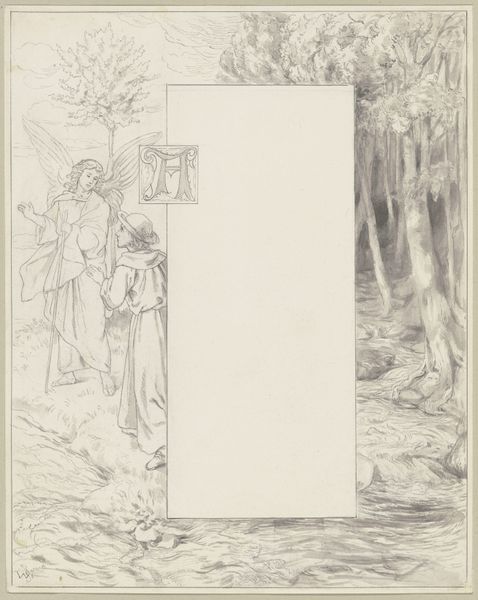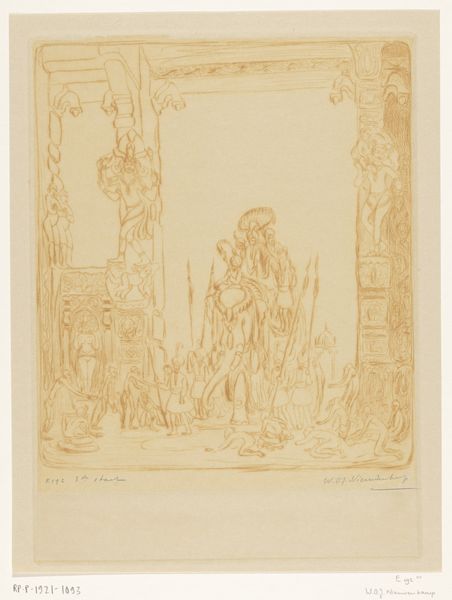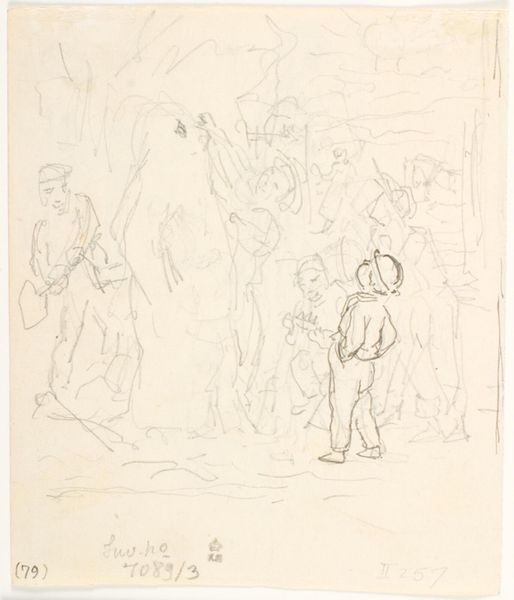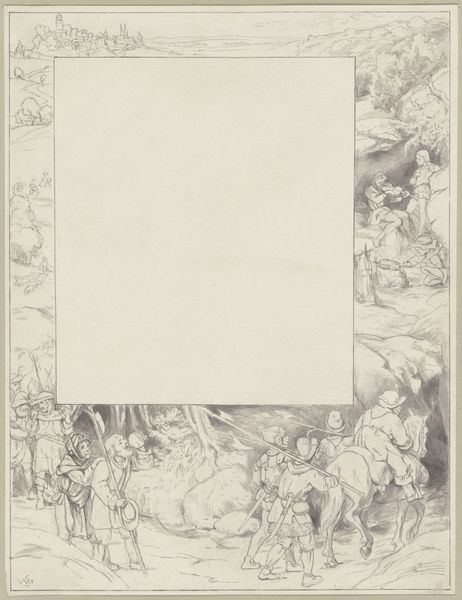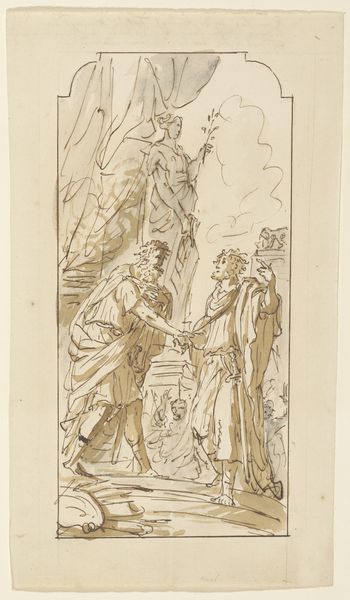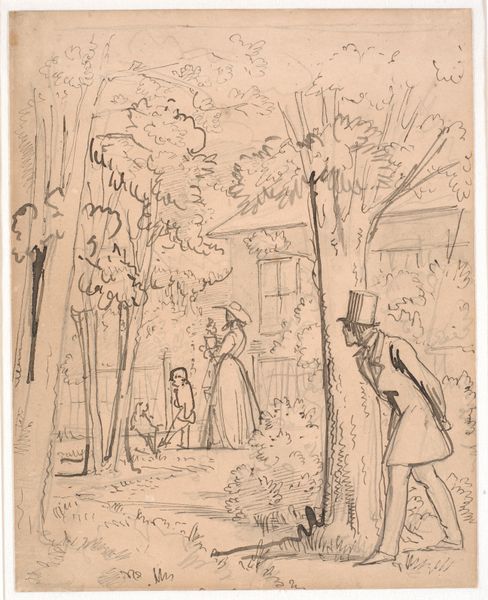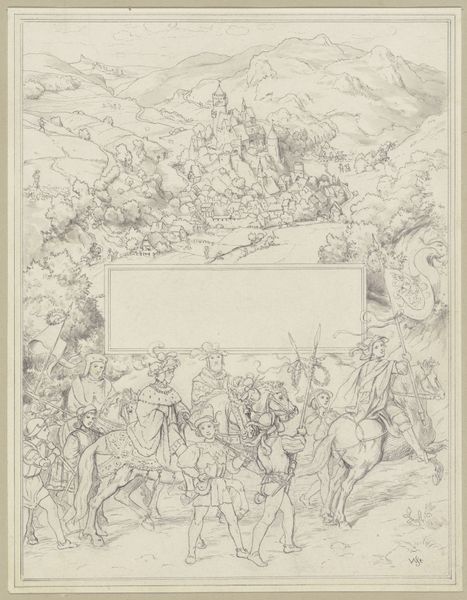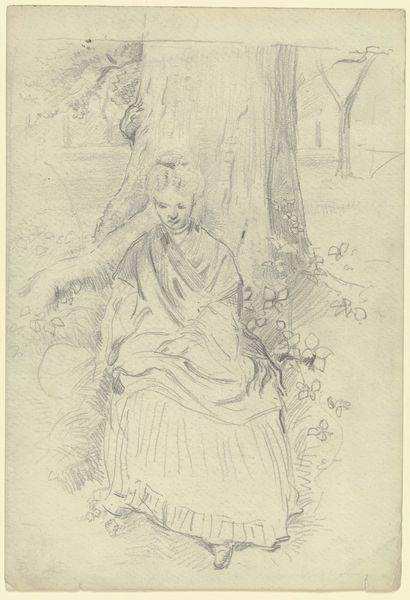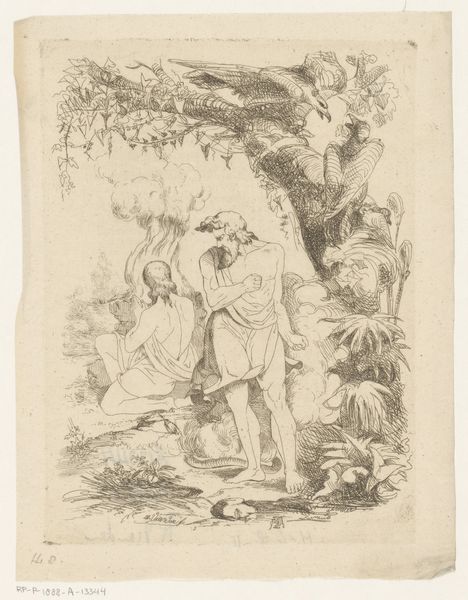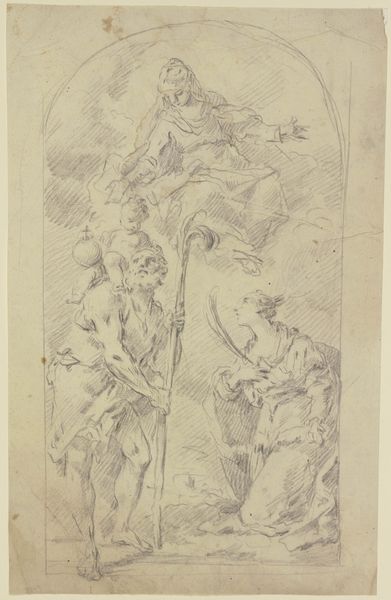![Diethers Traum vom Engel GottesIllustration zu_ Heinrich Steinhausen, „Irmela. Eine Geschichte aus alter Zeit“, Prachtausgabe, Leipzig_ Georg Böhme, [1884], S. 13 by Wilhelm Steinhausen](/_next/image?url=https%3A%2F%2Fd2w8kbdekdi1gv.cloudfront.net%2FeyJidWNrZXQiOiAiYXJ0ZXJhLWltYWdlcy1idWNrZXQiLCAia2V5IjogImFydHdvcmtzLzUwYTQ5YzU5LWUwYjktNDE2NC1hYTA5LTEyNjRmOGE0NzkzZC81MGE0OWM1OS1lMGI5LTQxNjQtYWEwOS0xMjY0ZjhhNDc5M2RfZnVsbC5qcGciLCAiZWRpdHMiOiB7InJlc2l6ZSI6IHsid2lkdGgiOiAxOTIwLCAiaGVpZ2h0IjogMTkyMCwgImZpdCI6ICJpbnNpZGUifX19&w=3840&q=75)
Diethers Traum vom Engel GottesIllustration zu_ Heinrich Steinhausen, „Irmela. Eine Geschichte aus alter Zeit“, Prachtausgabe, Leipzig_ Georg Böhme, [1884], S. 13 c. 1884
0:00
0:00
Copyright: Public Domain
Curator: There's something immediately ethereal about this image; a certain dreamlike quality that pervades every corner. Editor: Indeed. This is Wilhelm Steinhausen's "Diethers Traum vom Engel Gottes", a drawing dating to around 1884. It served as an illustration for Heinrich Steinhausen's "Irmela. Eine Geschichte aus alter Zeit," a deluxe edition published in Leipzig. What stands out to me is its place within the Gesamtkunstwerk, this elaborate marriage of literature and image-making. Curator: For me, the most striking aspect is the labor that's clearly evident, despite its function as mere illustration. You can practically feel the artist’s hand moving across the page, the individual strokes building into form and texture. And the choice of medium—ink, pencil, and chalk—really emphasizes the raw materiality. Editor: The image also strikes me in terms of the social context. It presents a Romantic interpretation of medieval spirituality, framed within a revival of interest in handcrafted books. We see echoes of the Arts and Crafts movement that aimed to restore art’s accessibility by combining beauty with functionality, rebelling against industrial production by returning to handcrafting methods. Curator: The blank rectangle dominating the center of the drawing really intrigues me; the composition of figures on each side seems to frame negative space as much as highlight them. It emphasizes the work’s nature as book illustration—that it’s an embellishment to the central text, using line and shade in harmonious visual communication. Editor: Exactly, and consider its consumption, not just in isolation, but embedded in a printed volume meant to be handled, reread, gifted perhaps—passed between people. Steinhausen’s artwork becomes entwined with a story, taking on deeper symbolic value based on readership. Curator: There’s such beauty here in seeing the integration of labor and craft. For contemporary art, challenging high art boundaries to examine materiality is relevant. Editor: Yes, this invites examination not only of Steinhausen’s skill and the context of book production but the larger socio-cultural trends of late 19th century Germany and that revaluation of religious history. Curator: Food for thought about our current digital age. Editor: Precisely; looking backward can provide great insight in a fast moving, media-saturated era.
Comments
No comments
Be the first to comment and join the conversation on the ultimate creative platform.
